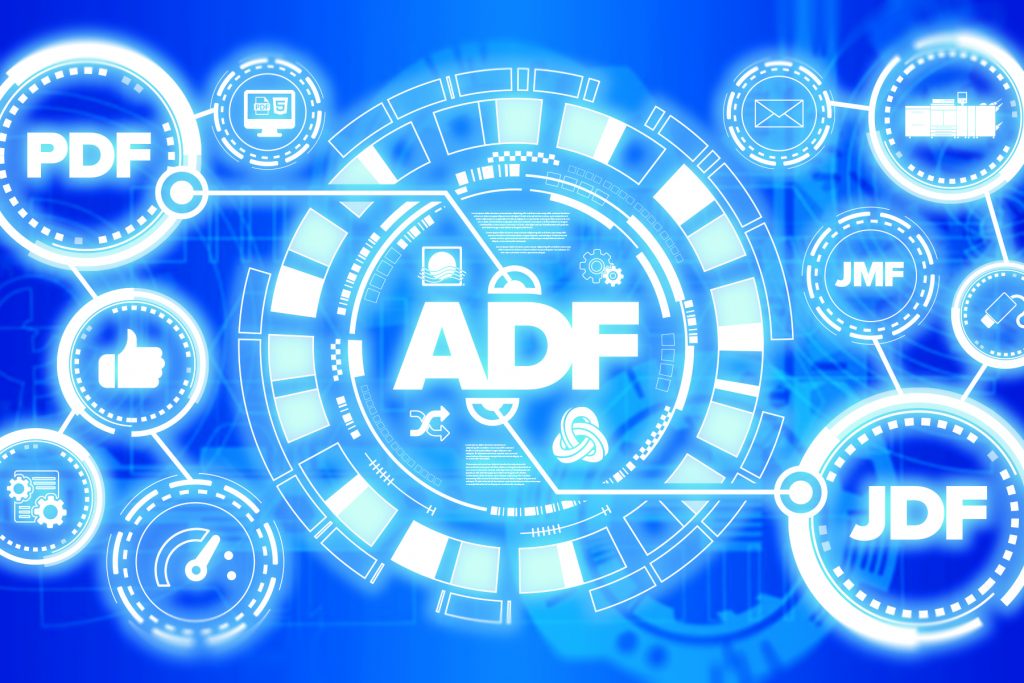
Features
Opinion
Tech
A formula for print shop success
Visibility with the ability to track and report on each process in real-time makes the ADF integral to an automated and efficient print production environment
October 22, 2021 By Jonathan Malone-McGrew
 Photo courtesy Solimar Systems
Photo courtesy Solimar Systems Workflow automation, already growing steadily in significance on print shop floors, has transcended the ‘nice to have’ bracket into essential territory. Every print shop is facing challenges where eliminating touchpoints, adjusting to decreased staffing levels and managing production remotely has become the reality for businesses the world over. The ability to reduce human intervention, boost visibility across end-to-end workflows and create seamless progression from job onboarding through to delivery, are critical components of successful and smart print production environments.
Automated factories are the path forward. Today’s smart factories can gather actionable data and insights, connect production processes and deliver visibility to all stakeholders. Critical for print shops, these developments in automation aren’t confined to the physical side of production; an automated document factory (ADF) applies the concepts of intelligent factory production to the workflow behind document production to track every touchpoint through the workflow.
The author’s company, Solimar Systems, has developed a formula for print shop success: PDF + JDF = ADF. Businesses have been building out elements of their ADFs because they need more end-to-end visibility, transparency and optimization within output management. Let’s break down each component of the equation, before taking a look at the formula as a whole.
Get familiar with the formats
Gartner defines an ADF as “an architecture and set of processes to manage the creation and delivery of mission-critical, high-volume digital documents. ADF applies factory production concepts to document production — raw materials, including data and preparation instructions, enter the ADF, where they are transformed into digital documents and prepared for delivery.” An ADF generates a positive impact on the bottom line, thanks to efficiencies that can save costs.
One key to an efficient ADF is standardization on a print file format. Most people are familiar with PDFs. When PDF readers became available free of charge, the genie was let out of the bottle, and the format became a dominating force. It is the reason why trillions of pages are now stored in PDF. The format is the clear winner over legacy data streams. PDF facilitates a reactive workflow. Its features are specifically designed for electronic workflows and collaborative processes that require approval. Even the oldest versions of PDF provide amazing functionality, as these capabilities continue to evolve with encryption updates and additional functionality.
Another key to an efficient ADF is workflow communication and interchange. Job definition format (JDF) is a set of guidelines for that information interchange in a communication workflow, making interoperability a reality, enabling users to track the real-time status of multiple jobs, creating an audit trail for all jobs and collecting data on consumable usage. The shift away from legacy content formats, including traditional job tickets, and toward the more open standard of PDF, requires a complementary data exchange vehicle. This allows for a more holistic view of the print shop floor and facilitates the creation of status tracking and recording of valuable data. JDF is a common approach.
JDF has had something of a bumpy road, with a reputation for being vendor-specific. Finding implementations that work reliably has been a challenge. It has also been difficult to build complex jobs, such as cross-product ganging. Between these challenges and barriers to entry such as the lack of a Windows driver, JDF has seen slower uptake than expected since it was introduced in the 1990s.
However, JDF and job messaging format (JMF) specifications can be leveraged to implement an ADF and boost the efficiency and visibility of print production. JMF makes JDF dynamic. The combination enables production hardware and software systems in a JDF workflow to communicate with administration components and system controllers, permitting data exchange and visibility in real-time.
Lack of visibility is a source of anguish in under-automated production environments. A holistic view of the shop floor is essential to management who need to manage inventory costs, labour rates, and invoice accurately and in a timely manner. On the production side, visibility on a more granular level is required, from knowing when a job has arrived, to its condition and what needs to occur before it gets on the press to when it’s on the press, when it’s in finishing and when it’s launched for mail.
This is where the JDF/JMF combination makes a difference. It enables users to gather ink and media data following job runs and feed that back to the system, allowing production managers to audit and compare what was estimated versus what they received. This data provides accurate insights into the actual running costs.
Right solution
When it comes to choosing the right solution for your ADF, you have three options: you can outsource, purchase a ready-made solution or build a system yourself. Outsourcing can be an affordable option. However, it is important to consider output management is often regarded as a cost centre rather than a revenue centre, putting pressure on organizations to be more cost-efficient. A home-grown solution requires a highly skilled team, and often means functionality is limited.
Visibility with the ability to track and report on each process in real-time makes the ADF integral to an automated and efficient print production environment. While the automation shift has seen adoption, there is still a lot of room for organizations to evolve their document factories to replace outdated models for tracking and managing information.
Jonathan Malone-McGrew is senior director of engagement, Solimar Systems.
Print this page